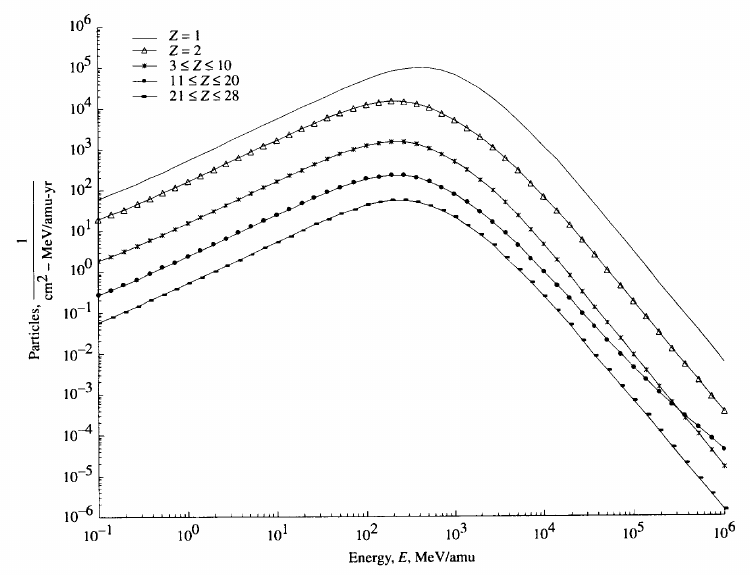Cosmic rays
Cosmic rays are high energy particles that are part of the background radiation in space. Most cosmic rays are absorbed in the Earth's atmosphere and do not reach the planet's surface. However, a cosmic ray that hits an air molecule shatters into a shower of secondary radiation traveling within 1 degree of the original direction, and much of this secondary radiation does reach the Earth's surface. About 0.390 milliSieverts of radiation per year come from cosmic rays on Earth. (100 milliSieverts of radiation in a year is the smallest amount known to cause an increase of cancer; 400 milliSieverts of radiation in a short time, (under several days), might cause symptoms of radiation poisoning.) In orbit astronauts take ~150 mSV of radiation (but this includes radiation from the sun. (Currently trying to find solar and cosmic radiation broken out from each other.)
Note that the lowest energy cosmic rays have similar energies to the highest energy particles from the sun, so the two blend into each other.
Cosmic rays have detrimental effects on human health[1].
Since cosmic rays come from every direction, being on a planet will automatically halve your cosmic ray dose compared to deep space, since half of the sky is blocked by the planet beneath your feet.
On Mars, only about 1.6% of cosmic rays are absorbed by the thin atmosphere, (pretty good considering the air is 0.6% as thick as Earth). Therefore radiation shielding is required for the habitats.
Composition
Cosmic radiation comprises 85% protons, 14% alpha particles, and 1% heavy ions.[2]
Energy

References
- ↑ https://en.wikipedia.org/wiki/Health_threat_from_cosmic_rays
- ↑ Schimmerling W. (2011, Feb 5). The Space Radiation Environment: An Introduction. https://three.jsc.nasa.gov/concepts/SpaceRadiationEnviron.pdf
- ↑ Kim MY, Thibeault SA, Simonsen LC, Wilson JW. (1998). Comparison of Martian Meteorites and Martian Regolith as Shield Materials for Galactic Cosmic Rays. NASA TP-1998-208724. http://hdl.handle.net/2060/19980237030






